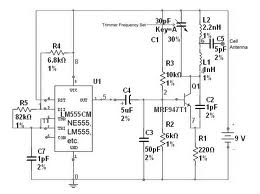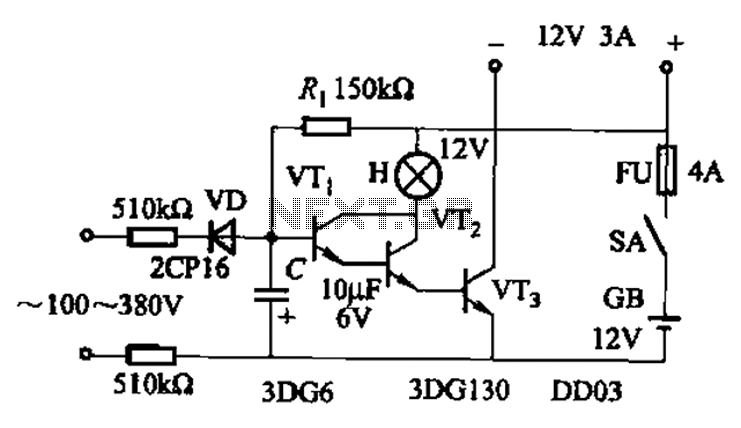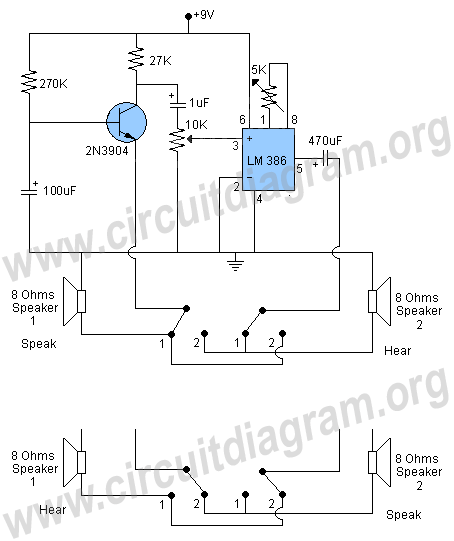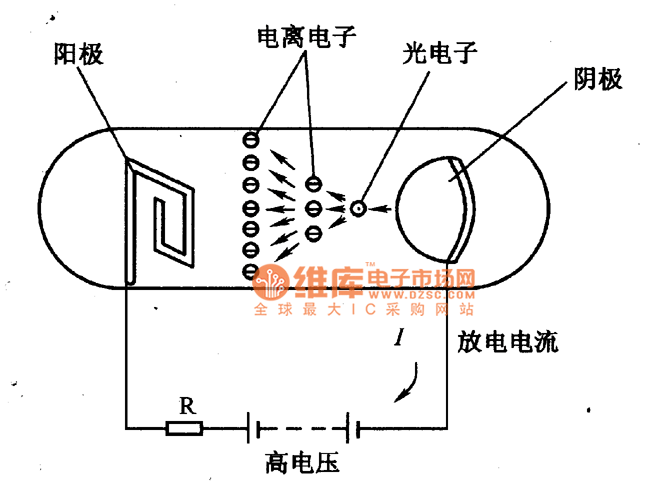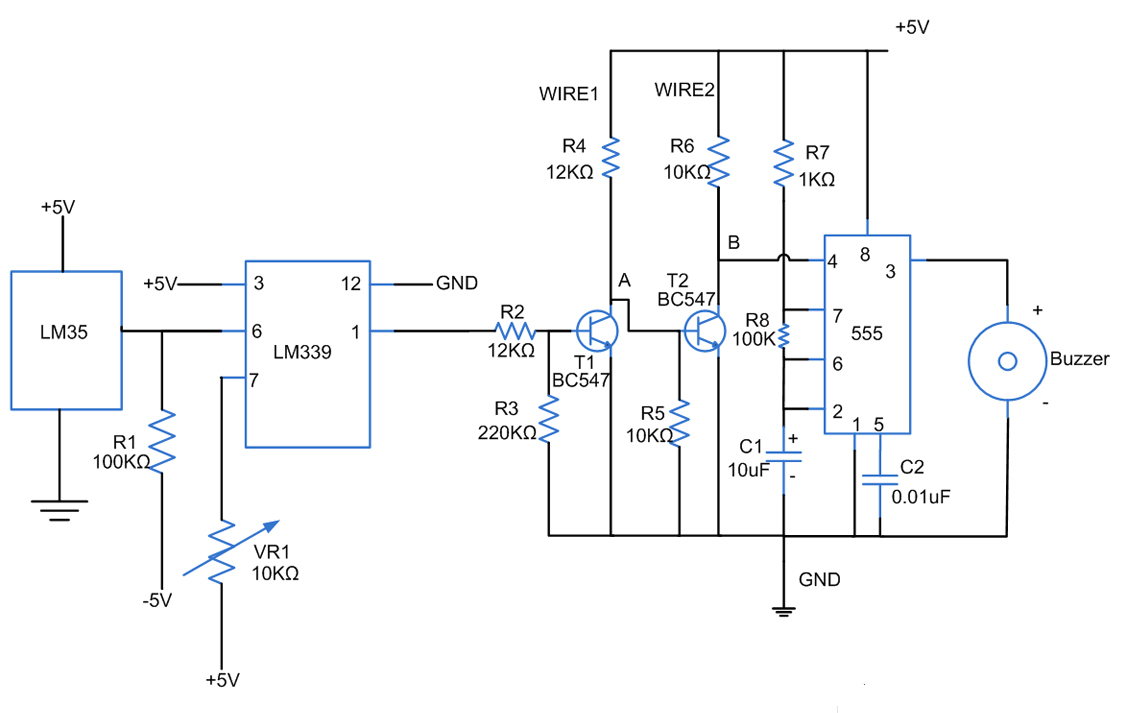
Paraphase Tone Controller circuit
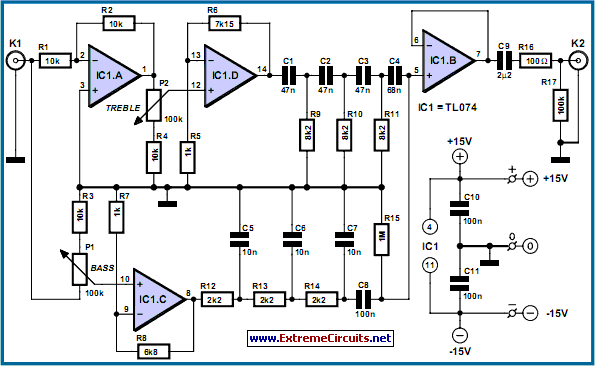
The paraphase configuration is noteworthy for its ability to adjust either treble or bass, but not both simultaneously. The adjustments made to the tone controls directly influence the slope of the frequency response and the extent of bass and treble correction. The circuit is straightforward, consisting of two networks: C1-C2-C3/R9-R10-R11 and C5-C6-C7/R12-R13-R14.
The paraphase configuration is an audio processing circuit designed to manipulate frequency response characteristics selectively. Its primary function is to allow for independent adjustments of treble and bass frequencies, which is beneficial in audio applications where specific tonal qualities need enhancement without affecting the overall balance of sound.
The circuit comprises two distinct networks, each consisting of capacitors and resistors that work together to shape the audio signal. The first network, formed by capacitors C1, C2, and C3 in conjunction with resistors R9, R10, and R11, is responsible for one channel of the audio signal, while the second network, comprising capacitors C5, C6, and C7 paired with resistors R12, R13, and R14, handles the other channel.
The configuration allows for the adjustment of either treble or bass by altering the resistance values or capacitance in one of the networks, thereby affecting the frequency response curve. The slope of this curve is determined by the difference in settings of the tone controls, which provides a precise means of tuning the audio output to the listener's preferences.
This design is particularly advantageous in applications where space and component count are critical, as it simplifies the circuit while providing effective control over audio characteristics. Additionally, the paraphase configuration can be integrated into various audio devices, including mixers, amplifiers, and equalizers, enhancing their functionality and user experience.This unique property makes the ˜paraphase configuration of interest if only treble or bass needs to be adjusted - it is not possible to adjust both at the same time! Essentially, it s the difference in setting of the tone controls that determines the slope of the frequency response, and the degree of bass/treble correction.
The circuit is simplicity itself, based on two networks C1-C2-C3/R9-R10-R11 and C5-C6-C7/R12-R13-R14.. 🔗 External reference
The paraphase configuration is an audio processing circuit designed to manipulate frequency response characteristics selectively. Its primary function is to allow for independent adjustments of treble and bass frequencies, which is beneficial in audio applications where specific tonal qualities need enhancement without affecting the overall balance of sound.
The circuit comprises two distinct networks, each consisting of capacitors and resistors that work together to shape the audio signal. The first network, formed by capacitors C1, C2, and C3 in conjunction with resistors R9, R10, and R11, is responsible for one channel of the audio signal, while the second network, comprising capacitors C5, C6, and C7 paired with resistors R12, R13, and R14, handles the other channel.
The configuration allows for the adjustment of either treble or bass by altering the resistance values or capacitance in one of the networks, thereby affecting the frequency response curve. The slope of this curve is determined by the difference in settings of the tone controls, which provides a precise means of tuning the audio output to the listener's preferences.
This design is particularly advantageous in applications where space and component count are critical, as it simplifies the circuit while providing effective control over audio characteristics. Additionally, the paraphase configuration can be integrated into various audio devices, including mixers, amplifiers, and equalizers, enhancing their functionality and user experience.This unique property makes the ˜paraphase configuration of interest if only treble or bass needs to be adjusted - it is not possible to adjust both at the same time! Essentially, it s the difference in setting of the tone controls that determines the slope of the frequency response, and the degree of bass/treble correction.
The circuit is simplicity itself, based on two networks C1-C2-C3/R9-R10-R11 and C5-C6-C7/R12-R13-R14.. 🔗 External reference
Warning: include(partials/cookie-banner.php): Failed to open stream: Permission denied in /var/www/html/nextgr/view-circuit.php on line 713
Warning: include(): Failed opening 'partials/cookie-banner.php' for inclusion (include_path='.:/usr/share/php') in /var/www/html/nextgr/view-circuit.php on line 713
